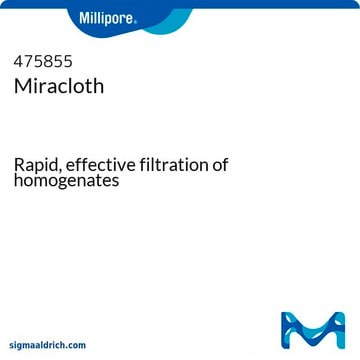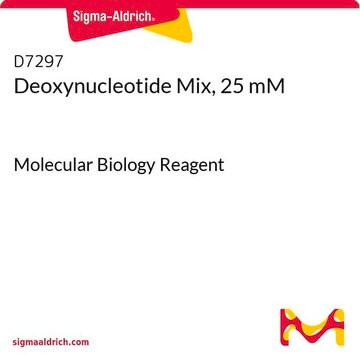D8037
Driselase™ Basidiomycetes sp.
BioReagent, suitable for plant cell culture
Synonym(s):
Driselase™ from Basidiomycetes sp.
Sign Into View Organizational & Contract Pricing
All Photos(5)
About This Item
Recommended Products
product line
BioReagent
form
powder
composition
Protein, ≥10% biuret
technique(s)
cell culture | plant: suitable
application(s)
agriculture
storage temp.
−20°C
Looking for similar products? Visit Product Comparison Guide
Application
Driselase™ Basidiomycetes sp. has been used:
- in spheroplast preparation from Coccomyxa cells
- in a CRISPR/Cas9-based mutagenesis protocol for Brachypodium distachyon and its allopolyploid relative, Brachypodium hybridum
- for cell wall digestion to perform whole-mount immunolocalization of Lotus japonicus root tissue
Biochem/physiol Actions
Driselase™ is a natural mixture of enzyme activities (fungal carbohydrates) used to digest plant cell walls to facilitate the maceration of plant materials, protoplast formation, and extraction processes. Driselase releases cell wall carbohydrates. This formulation contains enzyme activities of cellulose, endo-1,3-β-glucanase, and xylanase.
Other Notes
Crude powder containing laminarinase, xylanase and cellulase.
Legal Information
Driselase is a trademark of ASKA Animal Health Co. Ltd.
Signal Word
Danger
Hazard Statements
Precautionary Statements
Hazard Classifications
Resp. Sens. 1
Storage Class Code
11 - Combustible Solids
WGK
WGK 3
Flash Point(F)
Not applicable
Flash Point(C)
Not applicable
Personal Protective Equipment
dust mask type N95 (US), Eyeshields, Gloves
Certificates of Analysis (COA)
Search for Certificates of Analysis (COA) by entering the products Lot/Batch Number. Lot and Batch Numbers can be found on a product’s label following the words ‘Lot’ or ‘Batch’.
Already Own This Product?
Find documentation for the products that you have recently purchased in the Document Library.
D T Kaplan et al.
Journal of nematology, 22(3), 399-406 (1990-07-01)
Radopholus spp. were reared in carrot tissue culture via established procedures, with slight modification. Several plant tissue maceration enzymes and flotation media (salts and sucrose) were evaluated with regard to nematode toxicity and extraction efficiency. Best extraction of viable nematodes
T Ishii et al.
Carbohydrate research, 248, 179-190 (1993-10-04)
Hydrolysis of spinach-leaf cell walls with Driselase (a fungal enzyme preparation) released two arabino-oligosaccharides and one galactobiose, each carrying a ferulic acid moiety. The oligosaccharides were characterized by NMR spectroscopy, methylation analysis, and FABMS. They were O-(2-O-trans-feruloyl-alpha-L-arabinofuranosyl)-(1-->5)-L-arabinof uranose, O-(6-O-trans-feruloyl-beta-D-galactopyranosyl)-(1-->4)-D-galactopy ranose
D P Blowers et al.
Plant physiology, 86(2), 505-509 (1988-02-01)
Plasma membrane vesicles from wild carrot cells grown in suspension culture were isolated by aqueous two-phase partitioning, and ATP-dependent phosphorylation was measured with [gamma-(32)P]ATP in the presence and absence of calcium. Treatment of the carrot cells with the cell wall
Ricardo Enrique Grados-Torrez et al.
International journal of molecular sciences, 22(17) (2021-09-11)
The membrane domain of eukaryotic HMG-CoA reductase (HMGR) has the conserved capacity to induce endoplasmic reticulum (ER) proliferation and membrane association into Organized Smooth Endoplasmic Reticulum (OSER) structures. These formations develop in response to overexpression of particular proteins, but also
G J McDougall et al.
Carbohydrate research, 219, 123-132 (1991-10-14)
The retention times of 10 oligosaccharides, generated from the xyloglucans of Rosa and Tropaeolum by the action of Trichoderma cellulase, and of 17 related carbohydrates, in h.p.l.c. on an amino-substituted silica (Amino-Spheri-5) depended largely on the number of hydroxyl groups
Our team of scientists has experience in all areas of research including Life Science, Material Science, Chemical Synthesis, Chromatography, Analytical and many others.
Contact Technical Service








